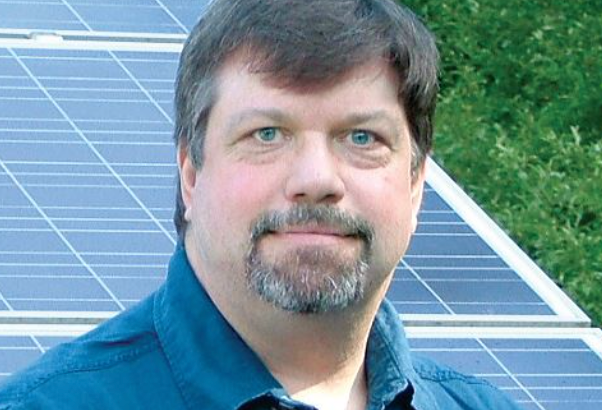Asegun Henry has a bright idea for how to make clean generation more reliable—a design that banks energy in molten metal, ready to feed back into the grid at night or when the wind dies down. What’s more, he says it can be cheaper than chemical batteries, such as lithium-ion cells, as well as other heat-based storage systems. Alternative battery ventures like his company, Fourth Power, are drawing money from Silicon-Valley style VCs, but veteran energy-industry investors are more skeptical that these startups can compete.
The Quest for Cheaper Grid Batteries
Energy storage is the essential technology for renewable generating sources, such as solar and wind. Not only are these generators intermittent, they may produce more power at certain times than the grid needs. Thus, electricity providers with a significant renewable generation mix need to draw on other sources when output is low, and bank energy when production exceeds demand.

The problem is that the most market-ready energy storage technology involves chemical batteries that are both expensive and in high demand, or physical storage, such as pumped water, that isn’t always practical. Absent cheaper energy storage, grid operators will fall back on other sources to make up shortfalls. That often means substituting power from baseline generators burning fossil fuels, such as coal or natural gas.
Technology start-ups are entering the field, backed by some big investments, to bring new thinking to the energy storage problem. Last December, for example, Boston-based Fourth Power received $19 million in venture capital funding, led by California-based DCVC, to begin construction of a demonstration facility, which stores energy in a medium of molten metal. The company expects the 1 MWh system to be completed in 2026.
Using Light Instead of Steam
Asegun Henry, founder and chief technology officer of Fourth Power, began working on his design at Georgia Tech and continued at MIT, where he is an associate professor. His work has been funded under a program by the U.S. Advanced Research Projects Agency – Energy (ARPA-E). Several companies are pursuing so-called thermal batteries, which store energy as heat instead of through a chemical process. The significant difference between the Fourth Power design and other thermal storage systems, though, is the extremely high temperature of the radiant storage medium. Heated to approximately 2,400 C (4,350 F) the super-hot metal liberates energy through photovoltaics instead of boiling water to turn a generator.

“The higher the heat, the more efficient the storage,” Henry says. “The main challenge was designing and manufacturing the pump, valves, and plumbing infrastructure capable of standing up to the highest temperature medium we can manage, which is liquid metal, that would corrode a metal-based infrastructure.”
So Fourth Power shifted to graphite pipes, instead. Its system takes surplus energy from a solar photovoltaic generator (although any source would work) and heats a graphite element that transfers the heat to liquid tin contained in a system of pipes. An all-graphite pumping system moves the liquid into carbon containment blocks that become so hot they radiate light. These are insulated to keep them usefully hot for up to a month.
When electricity is required, banks of photovoltaic cells are exposed to the radiant enclosures to produce electricity, with discharge periods ranging up to a few days before the storage units cool and stop glowing. Multiple enclosures may be linked into storage facilities to meet utility-scale requirements.
Origins in Older Solar-Power Systems
According to Henry, his concept for the thermal storage system originated in his earlier ARPA-E work on concentrated solar power (CSP) systems. This once promising approach uses vast arrays of mirrors that reflect sunlight to the top of a high tower containing a heating medium, typically a salt–based slurry. Water pumped through the medium creates steam that is piped to turbines on the ground to generate electricity. The heated targets remain hot long after sundown enabling the CSP system to continue generating electricity at night.
The chief drawback of CSP is its cost. While a number of large-scale facilities have been built in the United States and elsewhere, the falling price of photovoltaic solar power has made them less attractive.
“The turbine is the most expensive part of the process” Henry says. “I thought, what if I could get rid of the turbine and turn the heat way up, much higher than you get with a typical molten salt system? Then I can use thermophotovoltaics to turn the stored energy back into electricity directly and take the turbine out of the system.”
A Difficult Market To Crack
But better technology isn’t the only challenge for grid storage, says Kara Rodby, a technology principal at Volta Energy Technologies, an Illinois-based venture capital firm focused on energy storage. There is a plethora of long-duration energy storage (LDES) technologies, she says, based on science and system architectures that have been studied for decades.
“I am not worried about the technical readiness of the LDES space broadly,” Rodby says. “The issues are mainly related to market readiness and commercialization path.”
In her observation, commercialization of LDES technologies seems to be coming almost entirely through venture-backed start-ups rather than existing manufacturers. Companies raising venture money have to spend a lot of time and effort doing so and constantly justify the potential for large investor returns.
“One of the most common criteria VCs look for in the hard tech space is protectable differentiation,” Rodby says. “Usually this means something like, do you have patent protection over your special material or process that will prevent others from copying you? But when it comes to LDES, I think the landscape is so much broader.”
She gives the example of flow batteries, a chemical storage system that moves electrolyte fluids via pumps. “I’m not just worried that someone could copy your specific flow battery chemistry, for example,” she says. “I’m also worried that it won’t matter, and one of the hundreds of other flow battery chemistries, or even one of the hundreds of other LDES technologies, will get better market traction and deem you irrelevant.”
Scaling Up New Grid-Storage Tech
Fourth Power’s Henry says his focus is on deploying a single node of a utility-scale storage system. The demonstration facility will be a full-size block that would be reproduced in numbers needed for operational requirements.
“The physics and the engineering of the process are well understood,” Henry says, adding that most of the original development work is dedicated to the high-temperature carbon pump system and design of the plumbing and storage blocks. The photovoltaic system for liberating electricity from the radiant blocks already exists. “What we have to learn is how to scale it up. That’s what we are going to focus on for the next couple of years.”
As Rodby pointed out, there are a large number of startups looking to enter the LDES market, including many that have systems based on thermal storage. The amount of investment money chasing storage alternatives to lithium batteries will depend on the continued penetration of renewable energy sources on the electric grid that will depend on them.














